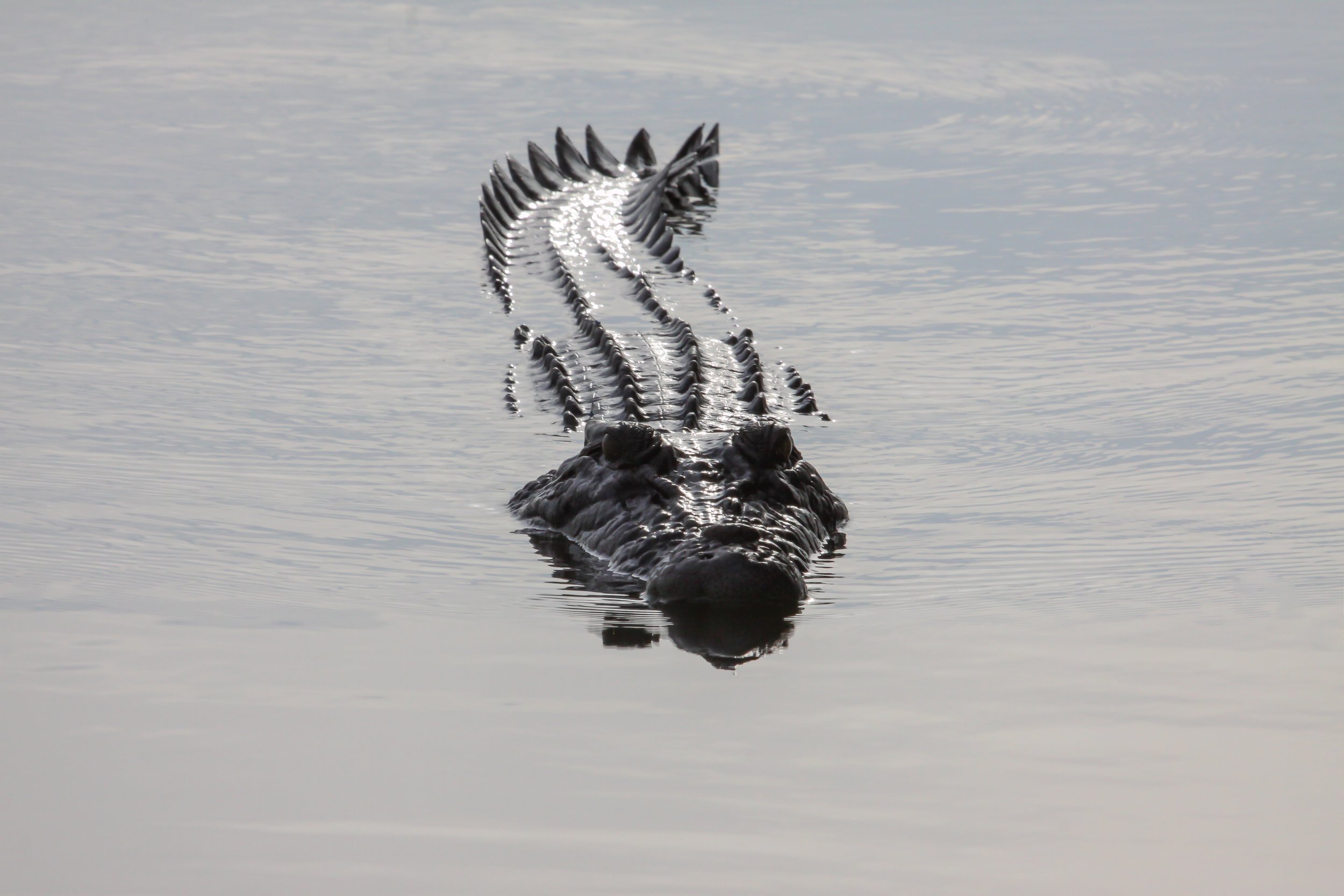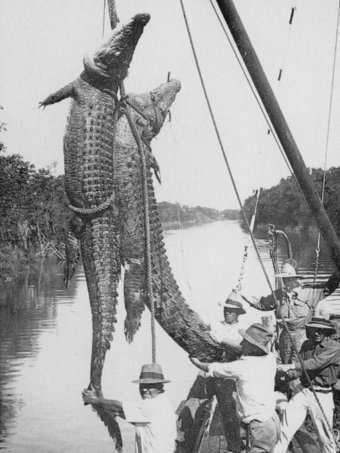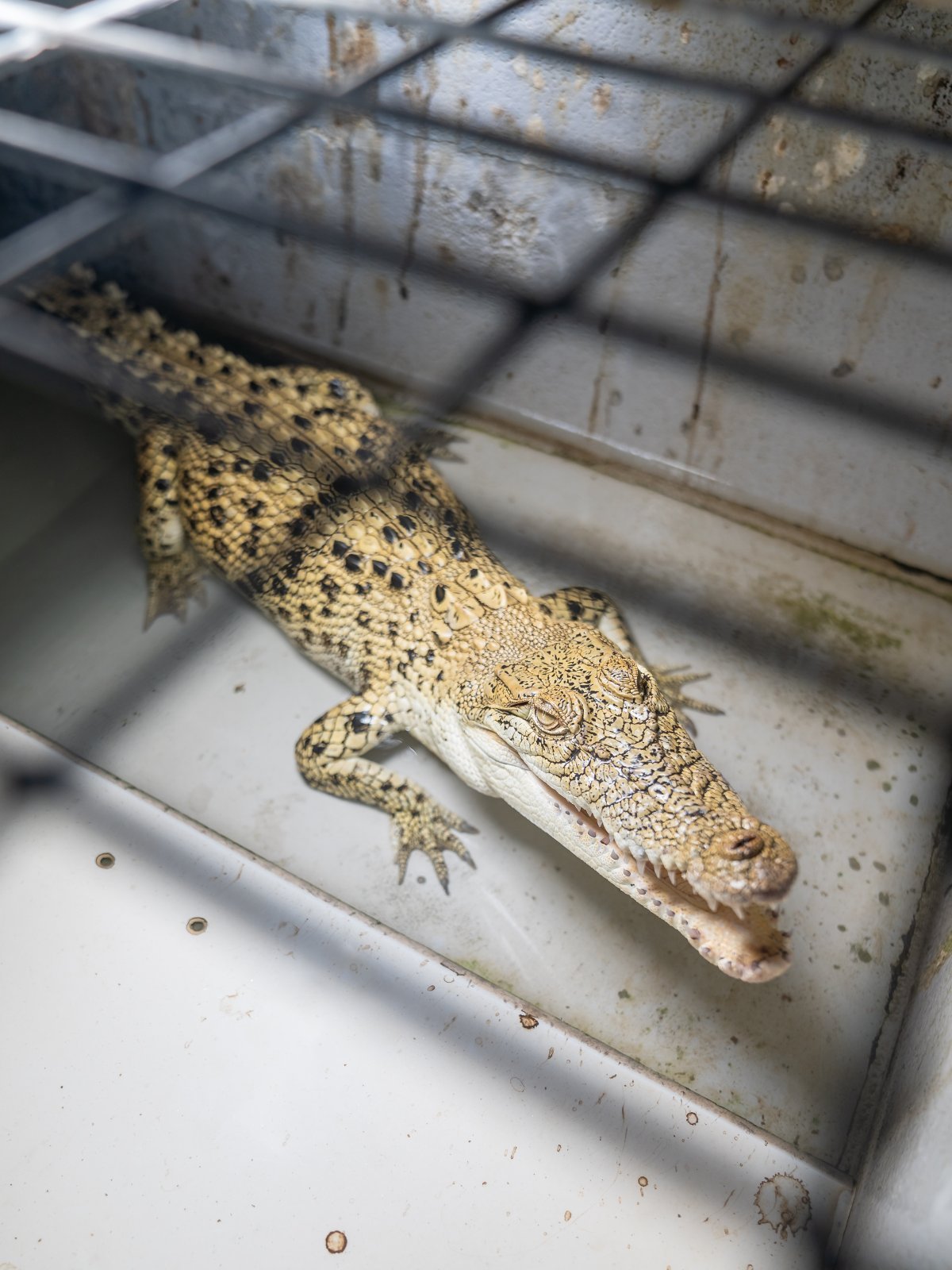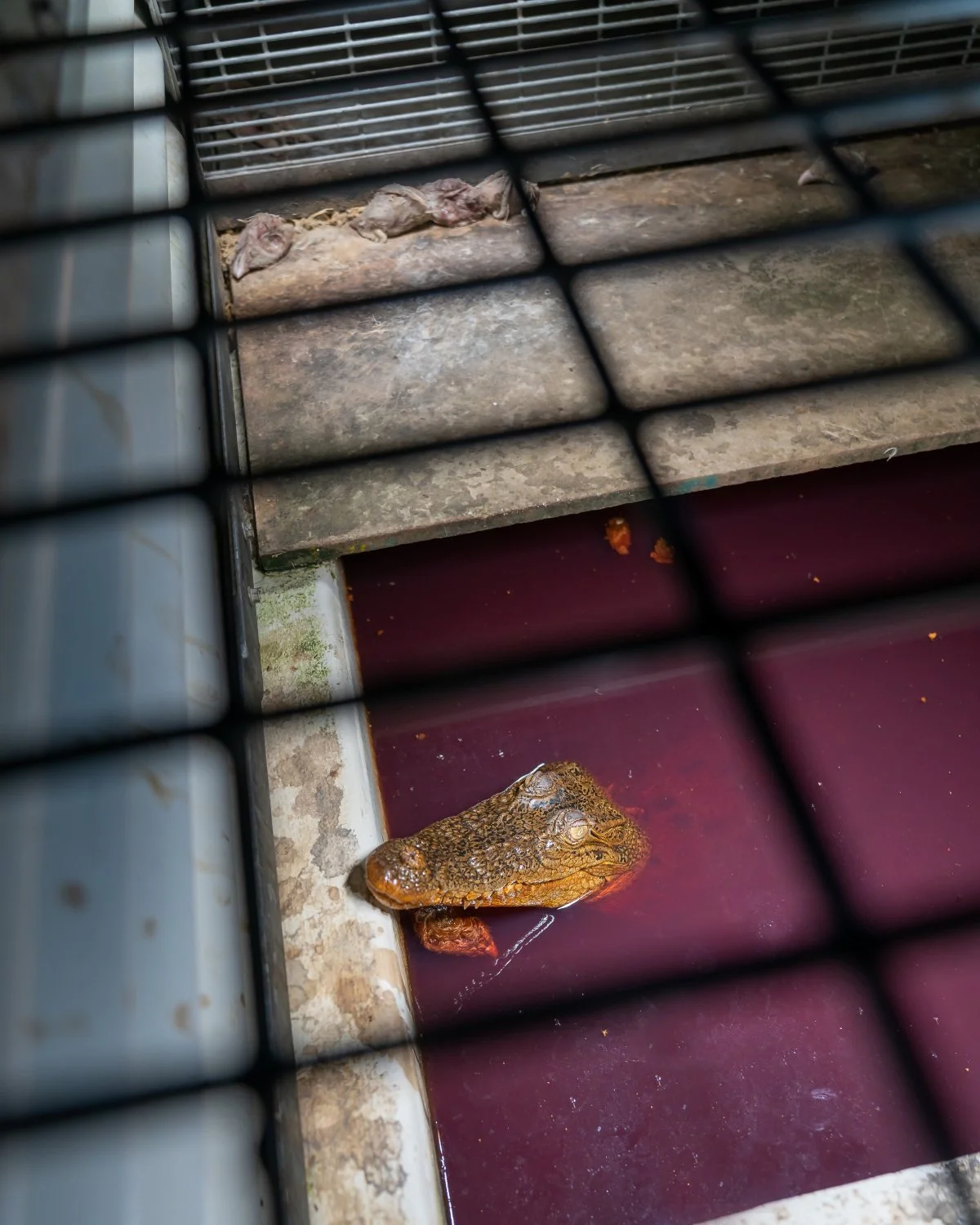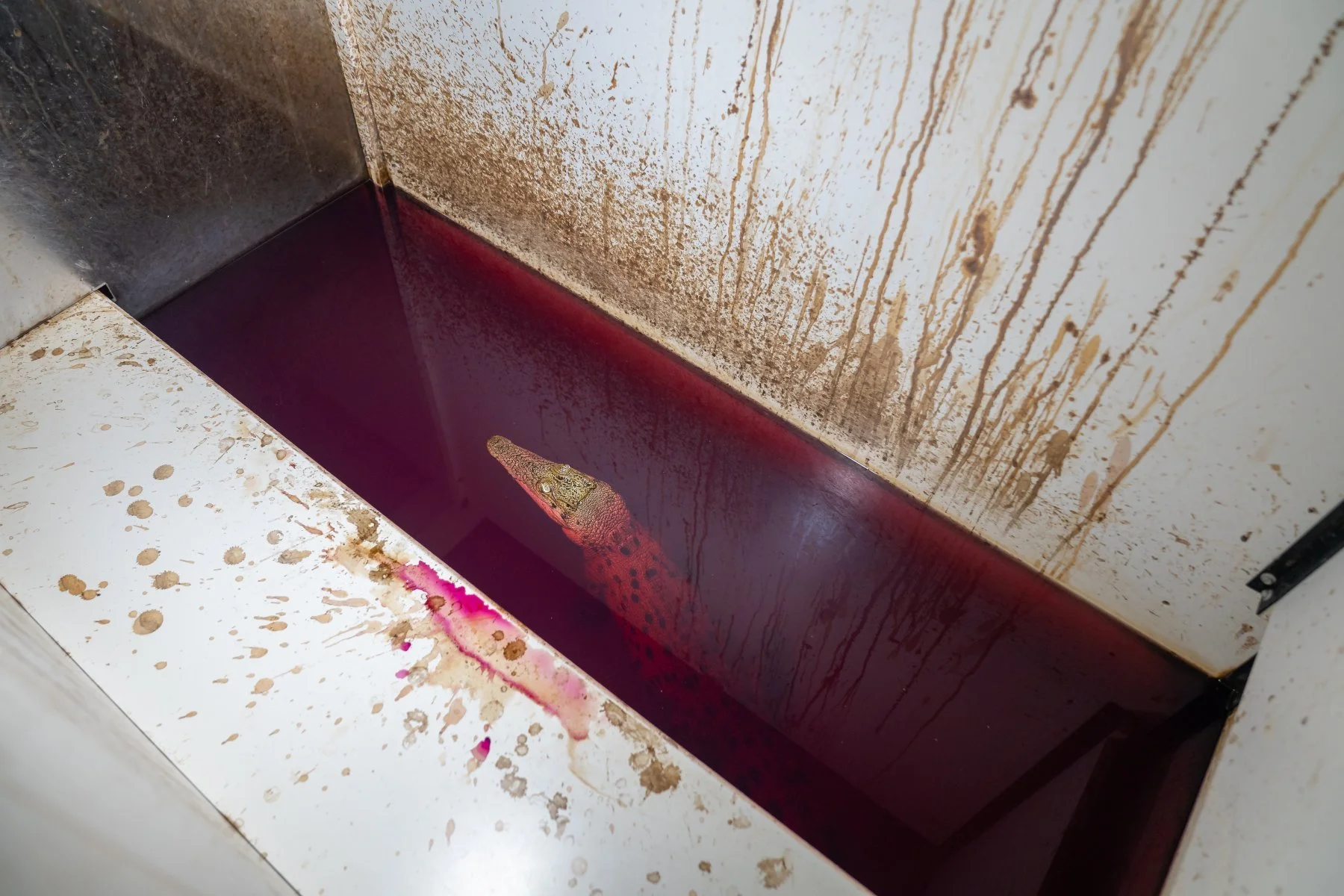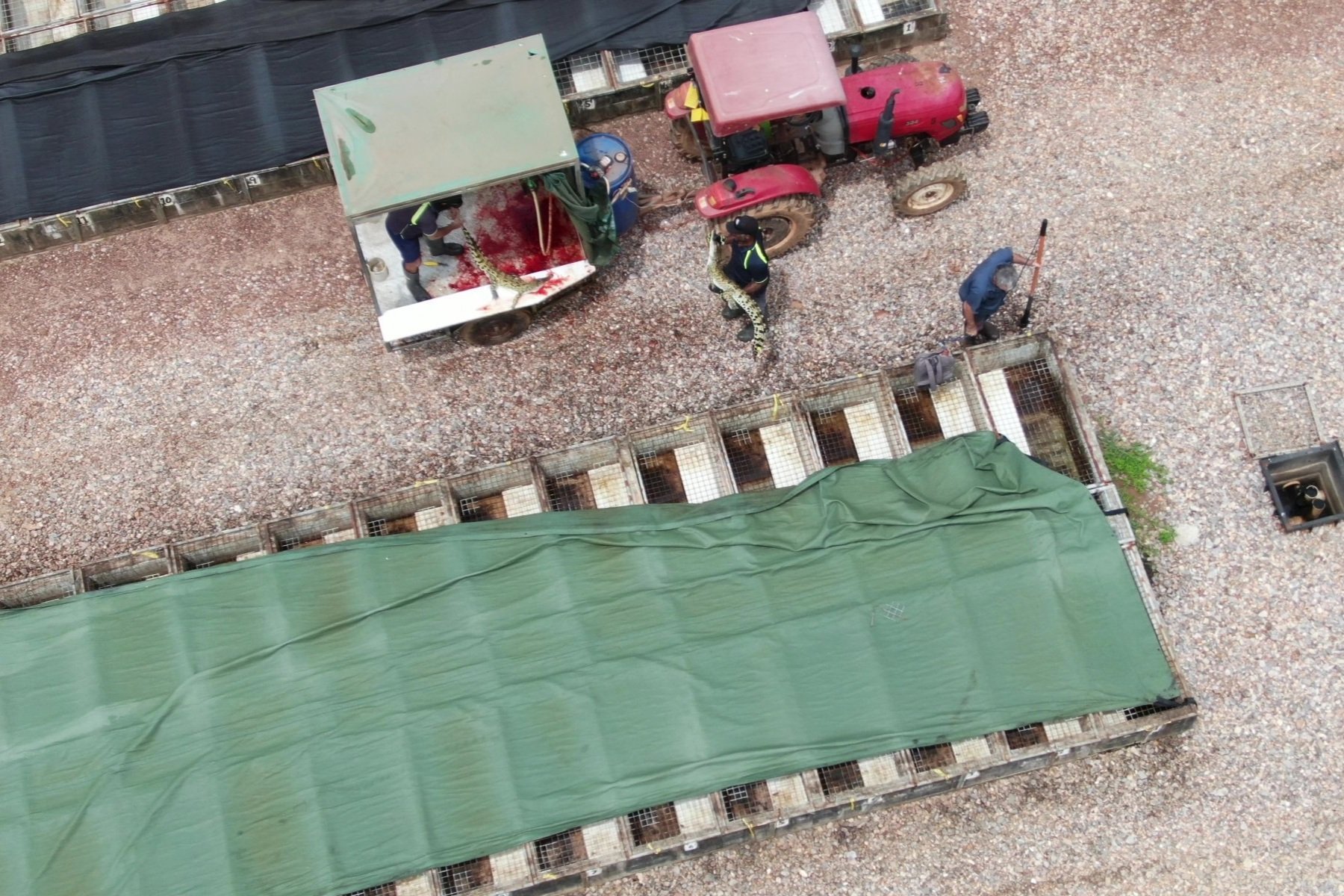
Crocodile farming
Factory farming the world’s largest reptiles for luxury fashion is commerce, not conservation.
Crocodiles are a native Australian animal that have lived on this land for over 100 million years. They play an important role in their ecosystem, maintaining the diversity and productivity of wetlands. Today, these ancient reptiles are being factory farmed and slaughtered to satisfy the desires of a lucrative luxury leather trade. Their skins are used for handbags and accessories that are sold for tens if not hundreds of thousands of dollars by fashion houses around the globe.
While the crocodile skin industry claims to exist for the sake of species conservation, this is little more than a greenwashing tactic used to retain the industry’s social licence, in order to continue profiting from the exploitation of these prehistoric, thinking and feeling creatures.
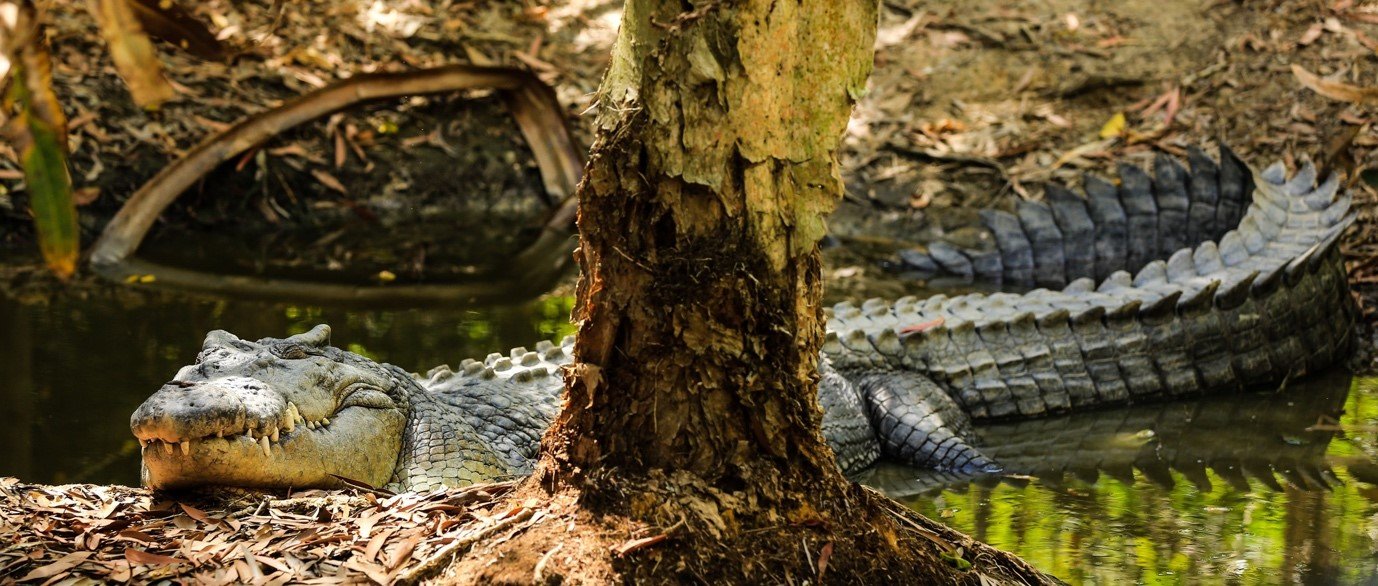
Crocodiles as individuals
Crocodiles are sentient animals, meaning they experience feelings and sensations. Crocodiles communicate with one another in complex ways using sound, visual and chemical signals that we are yet to fully understand. They have been known to play with objects and each other, even riding on one another’s backs when they are young. The enjoyment crocodiles experience through play is indicative of their high intelligence.
The crocodile species exploited for skins production in Australia is the saltwater crocodile, Crocodylus porosus, also known as the estuarine crocodile or less formally as the ‘saltie’. An Australian native and the largest reptile on the continent, this magnificent and unique species has survived unchanged for millions of years; a testament to the anatomy and physiology perfectly designed for its environment. The saltwater crocodile is the largest crocodile species in the world.
The history
After World War Two, powerful rifles that were capable of reliably killing crocodiles (something earlier ammunition was unable to do) became readily available. Furthermore, political unrest in Africa halted their regular supply of crocodile skins, increasing the international demand. In combination, these factors presented a market for Australia to begin killing crocodiles and selling their skins for profit internationally. In the 1950s and 60s, killing crocodiles for their skins became so intensified that the species was driven to near extinction.
In the 1970s crocodiles were afforded a selection of protections, in order to conserve the just 3,000 crocodiles remaining in the wild in Northern Territory, who were facing a very real risk of extinction. Since the ceasing of hunting crocodiles in the wild, their populations have increased to 100,000.
While the crocodile industry's main revenue stream is from the production of skins for the fashion industry, crocodile farming also generates some revenue from meat and tourism. By 2002, it was estimated that there were over 68,000 crocodiles on 13 farms. Almost all of which are intensive production systems, with some maintaining a tourism element to increase overall profits.
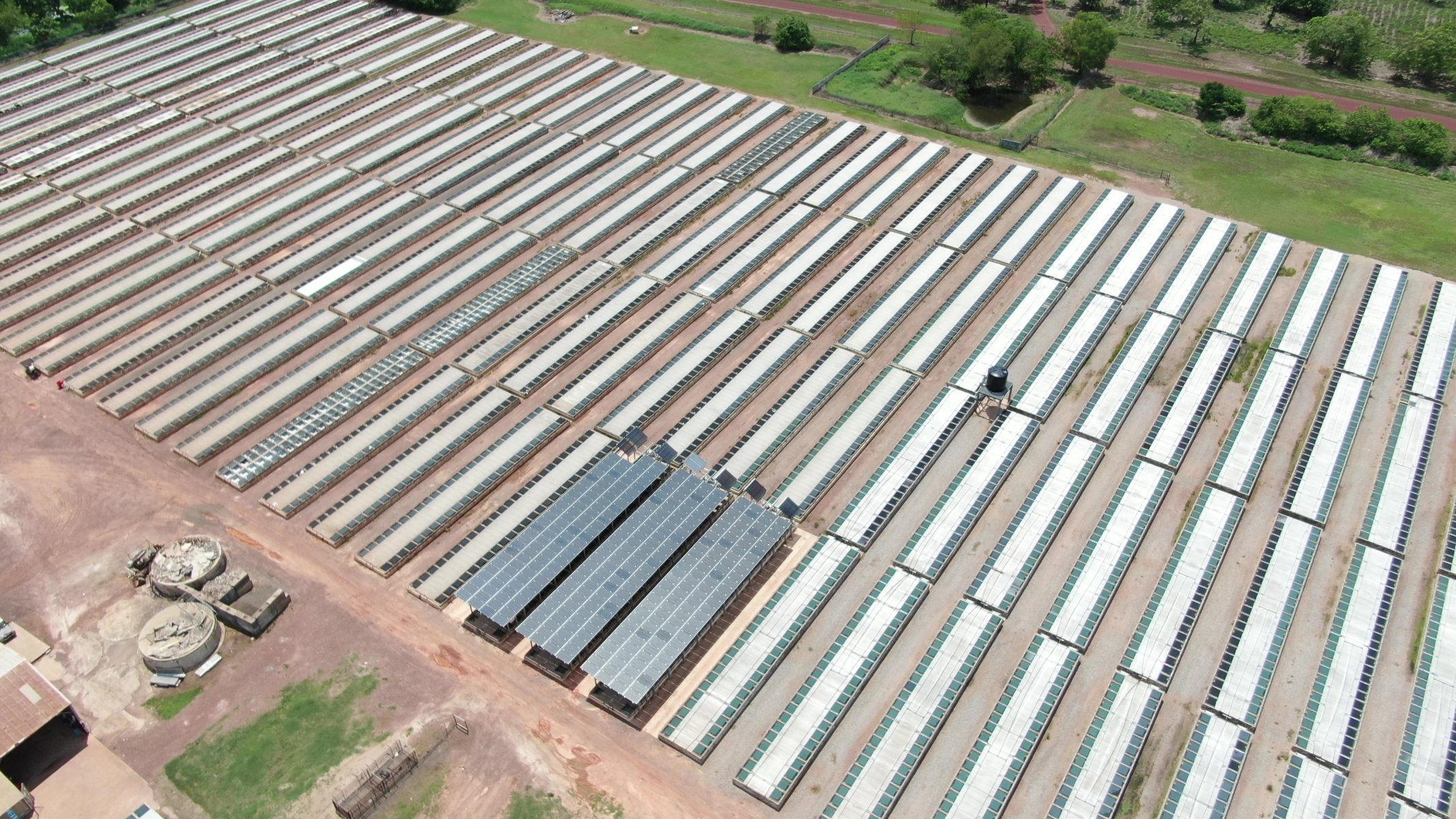
A protected species….
kind of…not really
Today, crocodiles have been granted “full protection” in the Northern Territory, Western Australia and Queensland. This means that crocodiles cannot be “taken”, “interfered” with, trapped or shot without holding a permit. Additionally, a person may not possess or sell living or dead crocodiles or their body parts without a permit, to appear as if efforts are made to conserve their species as a whole.
However, this “full protection” has done very little to protect crocodiles as individuals; on the contrary, past protections have now been removed following a proposal to farm the species for slaughter. Saltwater crocodiles were recategorised from Appendix I of the Convention on International Trade in Endangered Species of Wild Flora and Fauna (CITES) to Appendix II.
This means that crocodiles had parts of their protections revoked so that they could be profited from, under the guise of conservation.
The industry today
Australia accounts for 60% in the global trade of crocodile skins, two-thirds of which comes from the Northern Territory, the largest producer and dominant supplier of crocodile skins worldwide. There are 13 known commercial crocodile farms in Australia; five are known to be owned and controlled by luxury fashion house Hermès, and several others by Louis Vuitton.
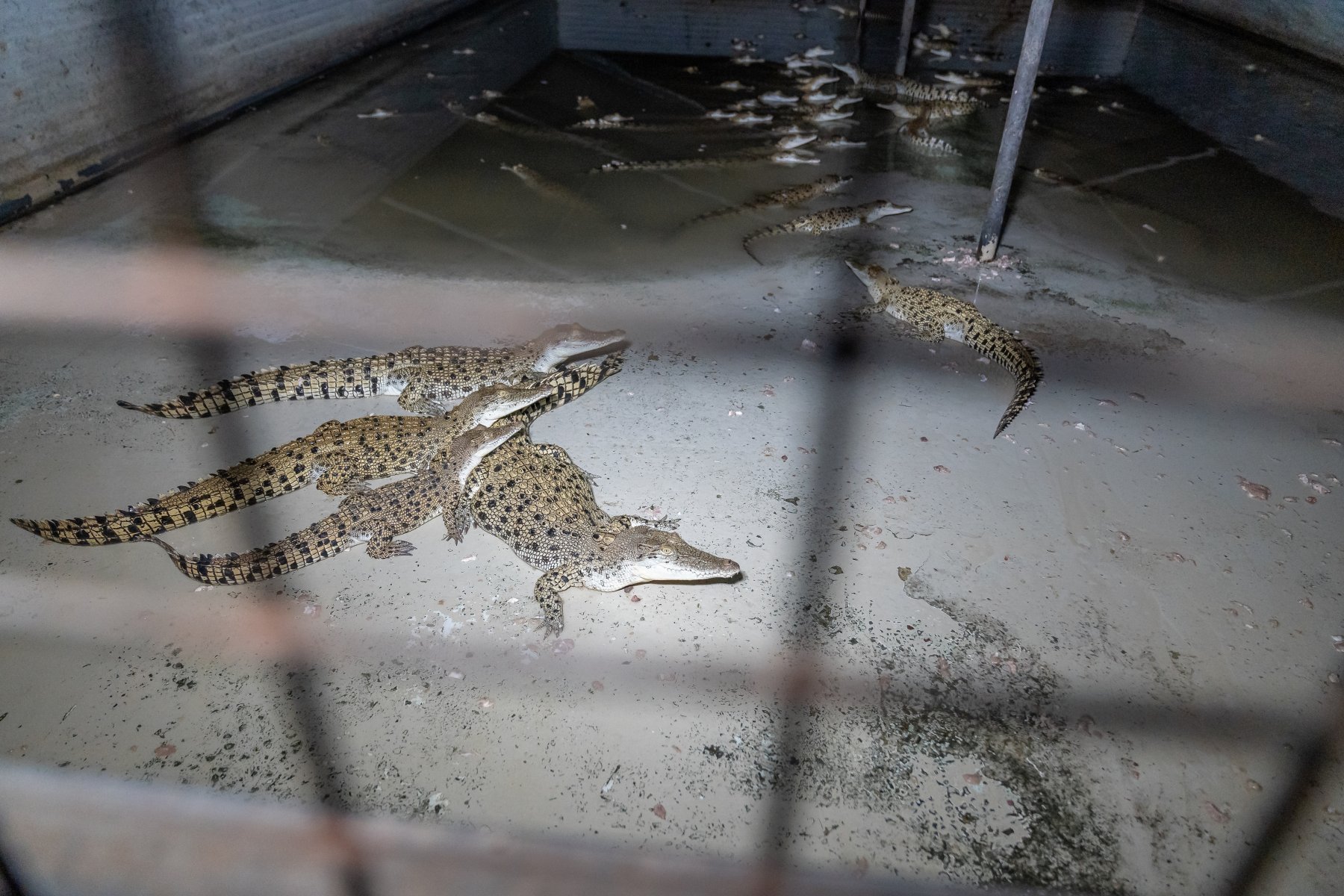
Failing codes allowing misleading claims of high welfare
Despite industry and government insistence of high welfare and conservation, the commercial crocodile farming industry is rooted in deprivation and confinement.
The reality is, crocodiles are living miserably in tiny, barren pens and wire cages on farms, and under current Codes of Practice it is not even required that they be afforded the length of their own body in space to live in. This allows fashion companies to boast high welfare standards, when their farming facilities marginally exceed the extremely poor government requirements, and make no meaningful difference to the crocodiles suffering on farms.
Further, Codes of Practice are not currently legally binding, due to the exemption of farmed animals from protection in the Australian Prevention of Cruelty to Animals Act.
The farming
Today, Australia’s saltwater crocodiles are bred in captivity or taken from the wild to be raised in factory farms. In the Northern Territory, approximately 90,000 wild eggs are allowed to be taken from nests annually. Eggs can be taken from the wild in Queensland too.
More than 10,000 crocodiles are killed each year, their skins fetching between AUD $300 - AUD$1,000 each depending on the “quality”. Meat and other co-products add another AUD$200 to the overall economic “value” of an individual crocodile.
In 2021, Farm Transparency Project released vision from more than 50% of the crocodile farms in the Northern Territory, revealing a horrifying reality for our salties.
As juveniles, crocodiles are kept in crowded group housing, until they are moved to solitary concrete pens or wire cages that replicate nothing of their natural habitat. Designed purely around keeping their skins blemish-free, the industry refers to these as ‘grow-out pens’ and they are mostly concrete with limited water (70:30 ratio).
The Code of Practice for the farming of crocodiles rightfully acknowledges that knowledge on reptile nociception (the nervous system’s process of interpreting harmful stimuli, or pain) and welfare is a developing field. As such, the current Code stipulates it should be reviewed within five years of publication. Despite this, the Code, which was written in 2009, is still yet to be reviewed. This means it is a whopping 15 years old and has only began being reviewed at the end of 2023.
Further, the Code stipulates the importance of the “precautionary principle”, and thereby explicitly incorporates the understanding that we should be assuming the worst in terms of the crocodile’s capacity for suffering until proven otherwise. The Code, however, fails to adhere to its own recommendation.
The slaughter
Despite crocodiles having a natural lifespan of 70 years, farmed crocodiles are slaughtered at 2 - 3 years of age to be turned into luxury fashion items.
Legally, crocodiles can be shot in the head, and if they are below 2m in length, they can be bludgeoned to death with a hammer or other tool. Almost all crocodiles raised for leather are killed before they are old enough to reach 2m.
Footage released by Farm Transparency Project reveals crocodiles being electrocuted in their pens, pulled out as their bodies convulse, a bolt gun shot through the tops of their heads, before a knife is used to sever their spinal cord and a rod is forced into the incision to scramble their brains. Some crocodiles were found to be breathing rapidly and even trying to stand for up to a minute after this ordeal.
Conservation or commerce?
Since their near extinction in the 60’s and 70’s crocodile populations have increased to an estimated 100,000 in the Northern Territory after bans on their hunting were put in plave. Though the crocodile industry claims this increase in population numbers is due to the introduction of farming, analysis of rising populations over several years shows that populations were already increasing at a similar rate to that seen after the introduction of commercial farming.
Conserving wildlife species is important, however, the integrity of individual animals’ lives is more important, and factory farming is not an appropriate solution. With more crocodiles living in confinement in factory farms than in their natural habitat in Australia, it is pretty clear that the crocodile farming industry is not for the good of the animals at all.
Crocodiles deserve to live freely on their native lands in safety. Their protection cannot be based upon financially incentivising their ongoing existence through exploitation, confinement, and slaughter. It is unethical to keep a species in existence purely to profit from them in this way.
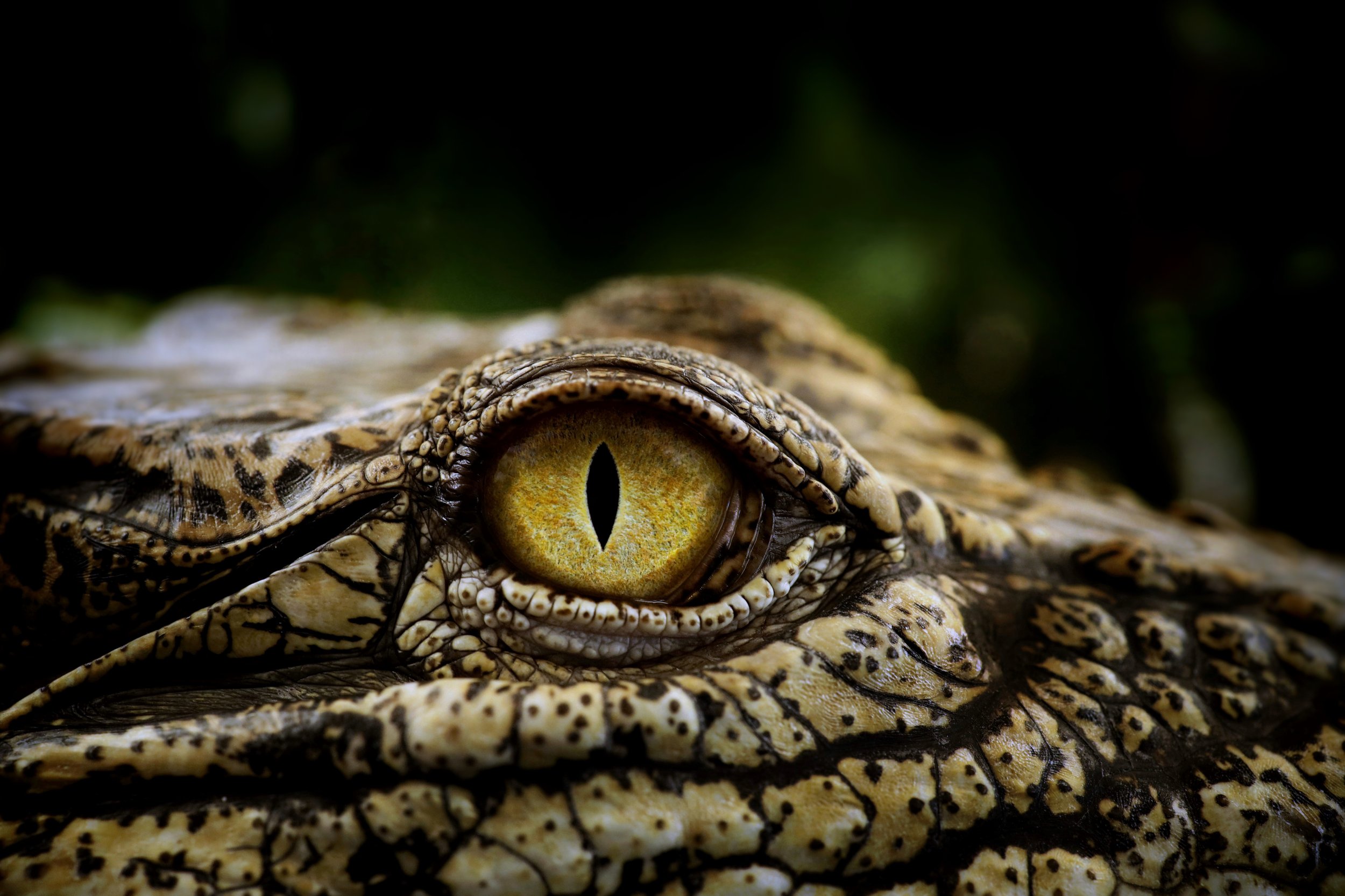
There are solutions available
After footage emerged from four Hermès owned Australian crocodile farms, Kindness Project released a report identifying several ethical industries that, with the right investments, could not only replace the jobs and revenue of the crocodile industry in the Northern Territory, but surpass them.
The Northern Territory Crocodile Industry Transition Plan was created with the intention of showing government institutions that a kinder, more sustainable and animal-friendly future is not only possible, but beneficial to the economy and community. An investment into the solar industry alone, for example, holds a potential value of 2.1bil, as well as to create 8000 jobs.
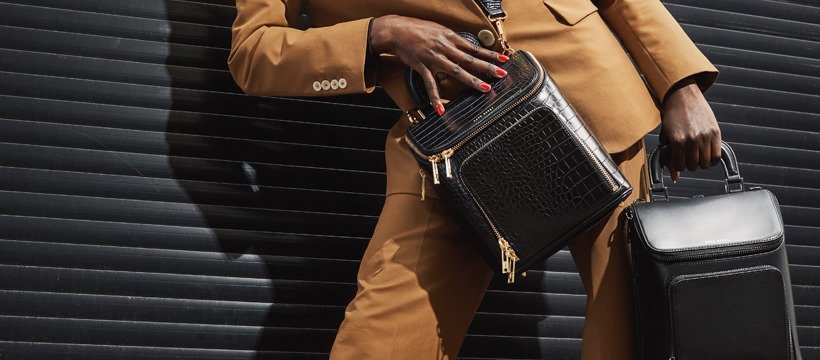
Innovation in fashion
The fashion industry is capable of moving beyond the use of all reptile skins, with this transition already in progress. Luxury brands such as Mulberry, Victoria Beckham, Calvin Klein, Vivienne Westwood and Chanel have all banned all exotic skins, as have many large retailers such as ASOS, Nordstrom and Selfridges. Similarly, Melbourne Fashion Week and Fashion Festival have banned all exotic skins.
More sustainable and ethical materials made from cork, processed mango-waste, mycelium and other bio-materials are able to be embossed to replicate the scales of crocodiles.
Image: Sans Beast
Make the pledge to become a Wildlife Defender!
Each of us have incredible power to create meaningful change - let’s use it. You can play an important role in the protection of Australia’s unique wildlife. Take the pledge to become a Wildlife Defender today and join a growing community of people defending the wild.
